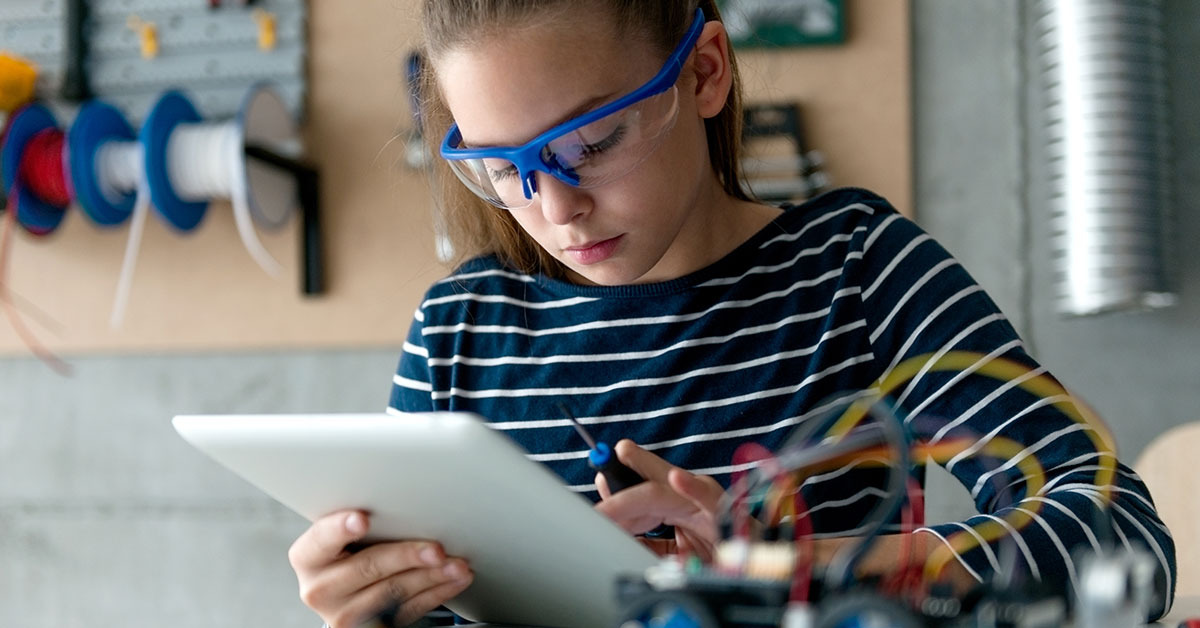
Top 6 Online STEM Activities to Have in K12 Curriculum
Summary
This article lists the top online STEM activities to include in K12 curricula. It emphasizes engaging activities that promote critical thinking, problem-solving, and hands-on learning, helping students develop essential STEM skills and prepare for future careers.
Online STEM activities are specifically designed to allow K12 students to explore digital tools while creating something using the steps of the innovative engineering design process. What is most exciting here is that nearly every topic and subject area can be easily incorporated into these challenges, and they can be used as a part of day-to-day academic activities.
In this blog, we explore some of the top digital STEM activities that educators must include in the K12 curriculum to enhance learning.
Table of Contents:
What are Digital STEM Activities?
Digital STEM activities simply refer to incorporating STEM or science, technology, engineering design, and math into K12 curriculum and classrooms to promote creativity, inspiration, and critical thinking in students along with other benefits of STEM education. The best part is that these activities can be implemented either in a whole-group setting or as an individual STEM station or center.
Here are some of the must-have online STEM activities in any K12 curriculum.
1. STEM-based Quick Build Challenge
A STEM-based quick-build challenge is a good way to engage K12 students during a live virtual class. An educator needs to select a building task that can be done with a range of simple materials available at home. Students can then participate in the activity in an online classroom setting.
For this digital STEM activity, ask your students to gather all the available material, which can be anything from straws, papers, paper plates/ cups, legos, newspapers, tape, etc.
Once done, prompt your students to come up with an initial design before building. Here, the aim is to make them brainstorm and discuss ideas that focus more on problem-solving, creativity, and perseverance during the building phase. The time element is an added attraction to this fun STEM activity.
2. Estimating Volumes STEM Activity
This is a simple measurement and math activity that is an exciting way to introduce the concept of volume to K12 students. The other advantage of this activity is that it also includes excellent fine motor skills practice for students.
The activity requires everyday items such as plastic measuring containers, a pitcher of water, a funnel, a tray, paper towels, and containers in different shapes and sizes. Alternatively, students can also try this activity with several other materials including shells, gems, blocks, and rocks.
The activity allows students to learn the concept of volume which is the space a substance/object takes up or that can be enclosed in a closed container. It is also a great way to get students thinking, problem-solving, exploring, and observing what is happening around them.
3. STEM-based Coding Communication Challenge
If you have been looking for an activity to promote communication and collaboration among your students, this is an ideal STEM-based coding activity through virtual platforms.
The activity requires one student to direct the other on the way of building a specific object and can be done with building materials like legos, index cards, paper modeling clay, or any other material available easily.
To implement the activity, teachers can either conduct live class sessions where students offer commands and attempt to build the tool, or students simply post a video with commands on how to build the tool. Their peers then respond by posting a video of their tool using the instructions given.
Related Article: AI-Powered Education: Revolutionizing K12 Learning through Robotics and AI
4. Virtual Field Trips STEM Activity
For K12 students, field trips hold immense importance as they can enhance a lesson plan for almost any subject. However, some of the biggest field trips aren’t available to many students. Most educators would agree that, in such a scenario, there’s also plenty to learn from implementing fun and informational virtual field trips.
These virtual field trips bring two key benefits to K12 students over in-person visits- zero cost and no crowds, along with offering an interactive & immersive experience to the students.
For instance, to learn the concept of space and the solar system, K12 students can take a virtual field trip through space, where different stars and planets can be conveniently labeled and they can closely observe several planets and stars up close using the solar system scope. Various view selections can allow students to see the solar system in different (planetary and panoramic) views.
5. Mathematical Operations Concept Using Real-life Example
This is a simple movement-oriented math STEM activity that can be done with everyday items such as a sheet of paper taped to the wall, a few sticky notes, and a marker. This activity helps kids understand the mathematical operators and meaning of numeric values thoroughly.
Similarly, for students just learning to count, understanding the concept that numbers increase in size can be quite confusing. However, with things such as pipe cleaners and beads, you can help students learn to count while also allowing them a simple visual of how numbers increase in size.
All you need to do is take small pieces of paper and label each of the pipe cleaners with a number. Students then have to simply arrange the pipe cleaners from small to big and start putting on the correct number of beads while counting aloud at the same time.
6. STEM-based Creating Model- Working Lungs
In this activity, students will be required to explore the inhalation/exhalation process that happens in the lungs during respiration. The activity can be done using everyday materials, where every student team will be required to create a model pair of lungs.
The objective of this activity is to allow them to describe the function of the respiratory system and create a model of the lungs, along with explaining what happens to them when they inhale and exhale.
Article Related: How K12 Learning Solutions Help Teachers and Students?
To Wrap
STEM education programs in the K12 curriculum specifically aim to integrate all four STEM disciplines for practical use in real-life applications. The big focus of these activities is often project-based learning and problem-solving.
By including the above digital STEM activities in the K12 curriculum, you can ensure that your students gain practical, real-world skills through career-focused pathways in different fields such as health and human services, information technology, business, and more.
Reach out to Hurix Digital to know more!

Senior Vice President
A Business Development professional with >20 years of experience with strong capability to sell new solutions and develop new markets from scratch. New Market Entry Specialist with experience of working in two of the largest emerging markets – China & India. Also covered other key markets in APAC, US, EU & ME. Exceptional experience of conceptualizing, ideating and selling new learning technologies like VR AR, etc. across multiple industry verticals.







